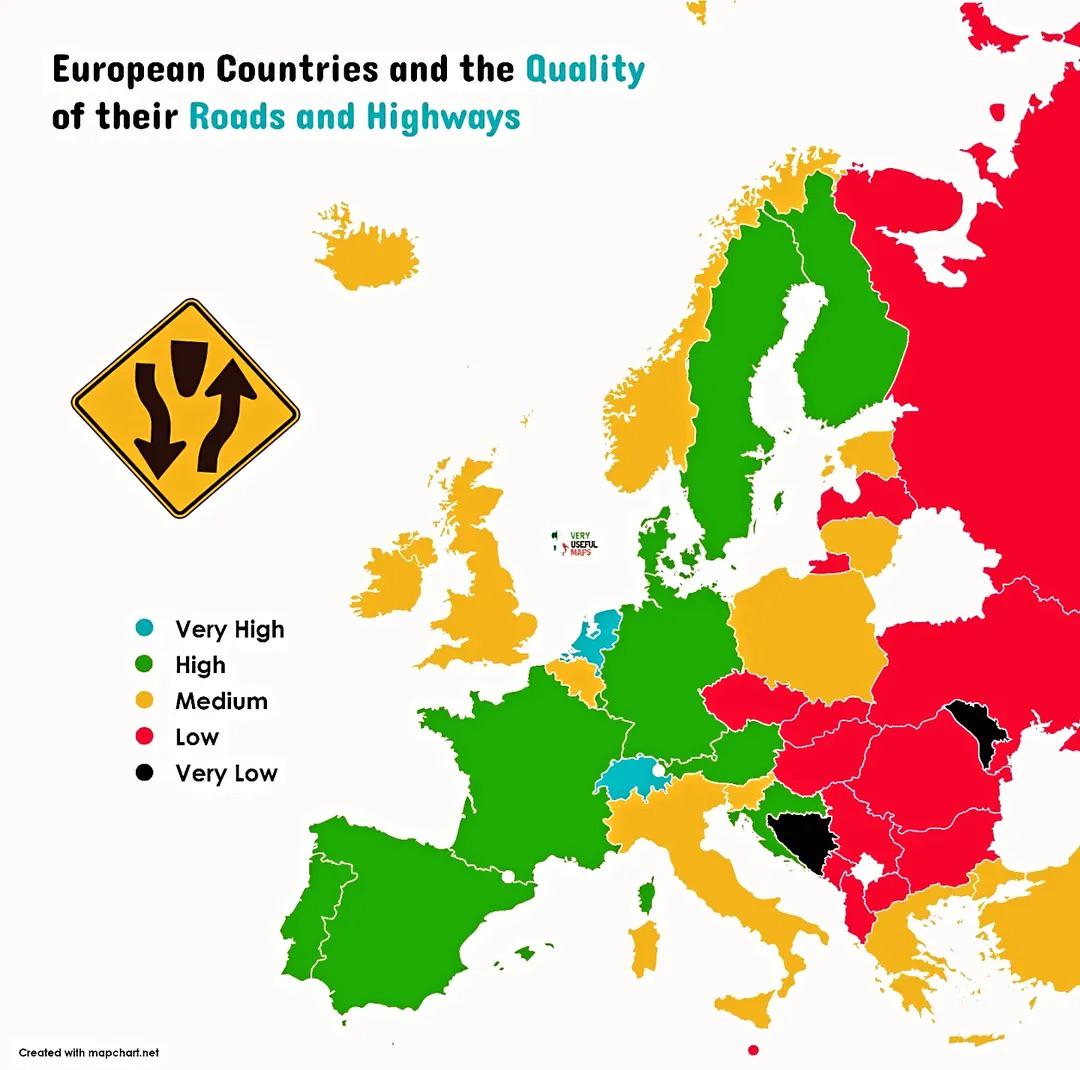Road Quality by European Country Map


David Chen
Data Visualization Specialist
David Chen is an expert in transforming complex geographic datasets into compelling visual narratives. He combines his background in computer science ...
Geographic Analysis
What This Map Shows
This map illustrates the quality of roads and highways across various European countries, highlighting the differences in infrastructure standards from one nation to another. It serves as a crucial visualization for understanding how road quality impacts not just transportation but also economic development, tourism, and overall quality of life. With a mix of colors indicating varying levels of road quality, it becomes immediately clear where countries excel and where improvements are necessary.
Deep Dive into Road Quality in Europe
Road quality is a significant indicator of a country's infrastructure health and, by extension, its economic viability. In Europe, road networks are vital for trade, tourism, and daily commuting. The European Commission often assesses road quality, and interestingly, many countries in Northern and Western Europe, such as Germany, Switzerland, and the Netherlands, consistently rank among the highest in terms of road conditions.
For instance, Germany's Autobahn is famous globally, not just for its lack of speed limits but also for its superior surface quality and maintenance. The country invests heavily in its infrastructure, with an annual budget of billions dedicated to road maintenance and improvement. In contrast, Eastern European nations, like Bulgaria and Romania, often face challenges due to underfunded infrastructure projects, leading to potholes and poorly maintained roads.
Moreover, according to the World Economic Forum, road quality is linked directly to national GDP. Countries with better roads typically see increased economic activity. For example, studies show that a 10% improvement in road quality can lead to a 1-2% increase in GDP. This correlation highlights not just the importance of roads for personal travel but also for commercial transportation and logistics.
Interestingly, the European Union has initiated several funding programs aimed at upgrading road quality in less developed regions. For instance, the Connecting Europe Facility (CEF) allocates funds specifically for infrastructure projects, including road upgrades, which are crucial for enhancing connectivity between member states.
Regional Analysis
When we analyze the map regionally, distinct patterns emerge. Northern Europe showcases countries with exceptional road quality, largely due to their consistent investment in infrastructure and robust engineering practices. Sweden and Finland, for example, not only have high-quality roads but also implement advanced technologies for road maintenance and safety, such as smart traffic systems.
In contrast, Southern Europe, particularly areas like Greece and Italy, presents a mixed picture. While major highways are often well-maintained, rural roads can be significantly lacking. This disparity affects both residents and tourists alike, leading to frustrations when navigating less-traveled areas. Furthermore, in Mediterranean countries, the seasonal impacts of weather can exacerbate road deterioration, posing additional challenges for maintenance.
Central Europe showcases a blend of road qualities, with countries like Austria and Czech Republic maintaining high standards, while Hungary has faced criticism for neglecting some of its roadways. The map clearly highlights these differences, making it evident that investment and management strategies greatly influence road quality.
Significance and Impact
The implications of road quality extend beyond mere travel convenience; they touch on economic growth, safety, and environmental factors. Poor road conditions can lead to increased vehicle maintenance costs, higher accident rates, and greater environmental impact due to more emissions from vehicles struggling on rough terrains. Ever wondered why some countries see higher accident rates? Often, it's linked to the quality of the roads.
As Europe continues to navigate challenges like climate change and urbanization, the importance of maintaining and improving road quality becomes increasingly critical. Countries are beginning to adopt more sustainable practices, such as using recycled materials for road construction and developing smart roads that can communicate with vehicles. These trends not only enhance safety but also contribute to reducing carbon footprints.
In conclusion, the quality of roads and highways in Europe is not just a logistical concern; it is deeply intertwined with economic health, safety, and environmental sustainability. As we move towards a more interconnected future, understanding and improving road quality will remain a vital focus for European nations.
Visualization Details
- Published
- August 10, 2025
- Views
- 116
Comments
Loading comments...